Frans Snyders (11 November 1579 – 19 August 1657, Antwerp) is considered to be the first specialist in what was a new Flemish form of still life – the animal still life.
Regarded as one of the finest animal painters of his day, Snyders had a particular knack for creating large, well-balanced compositions in which he displayed his great skill for expressing a rich variety of textures, such as furs and flesh.
This striking painting provides a clear example of Snyders’ talent and will be displayed in the Europe Galleries as part of the display on Hunting.
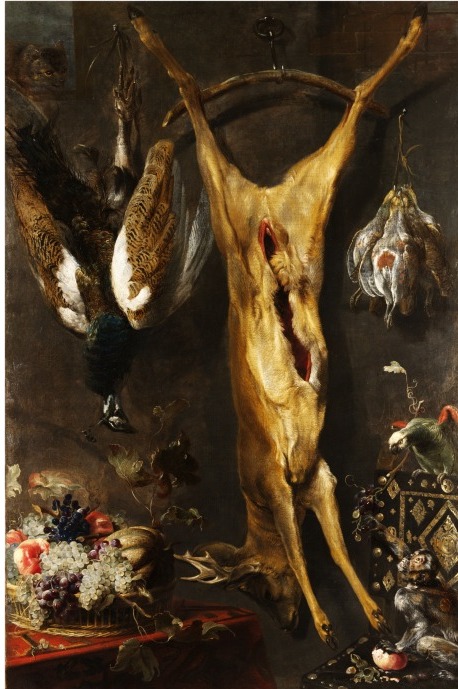
The contents of Snyders’ still lifes often don’t appear entirely ‘still’ and instead frequently feature suggestions of impending action and drama. Indeed in our painting, despite the many animal carcasses hanging from the wall, the inclusion of a cat, a parrot and a monkey in the scene bring it very much to life.
I’ve already drawn attention to the eager cat staring through the window in the top-left corner in a previous post, so instead here is a nice detail of the monkey and parrot in the bottom-right corner. The disgruntled parrot’s poise as it looks down at the monkey tentatively reaching for a grape, suggests that pandemonium could break out in a matter of seconds, with fur and feathers flying.

The motif of the monkey stealing fruit appears throughout Snyder’s works but in this case its inclusion in the scene appears to have been an afterthought. You may have noticed that it has a ghostly-quality to it, this is because the monkey was painted over the already completed chair and the thinly-worked oil paint used to depict the monkey has become translucent with age.
Snyders is recorded as being a student of Pieter Brueghel the Younger and also received instruction from Hendrick van Balen, who was the first master of Anthony van Dyck. Snyders became firm friends with van Dyck, who painted him with his wife on a number of occasions. I particularly like the double-portrait below, showing Snyders with his wife Margaretha, who was sister of the painters Cornelis de Vos and Paul de Vos (who also specialised in still lifes and animal and hunting scenes).
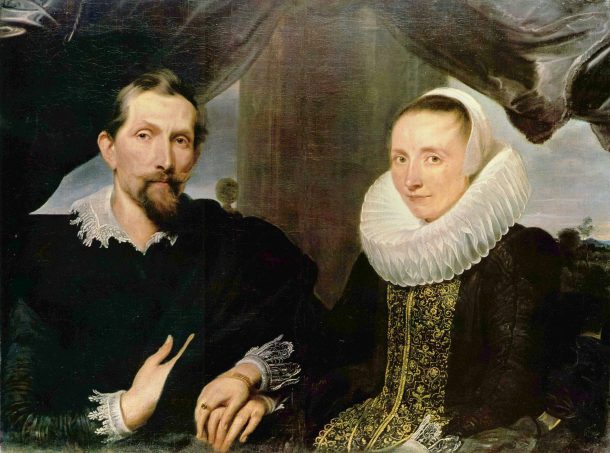
Snyders initially predominantly painted fruit, flowers and still lifes, but later produced impressive scenes of live animals, hunting pieces and wild animal combats. He was an acclaimed and much admired painter during his lifetime. He was appointed principal painter to the Archduke Albert of Austria, governor of the Low Countries and also frequently received commissions from both Philip III and Philip IV of Spain.
His skill for expressing the different textures of fruits, furs and skins also drew the admiration of Rubens, who frequently employed him to paint animals, fruit and still life for sections of his paintings. The two painters were close and Snyders was later one of the executors of Rubens’ will.
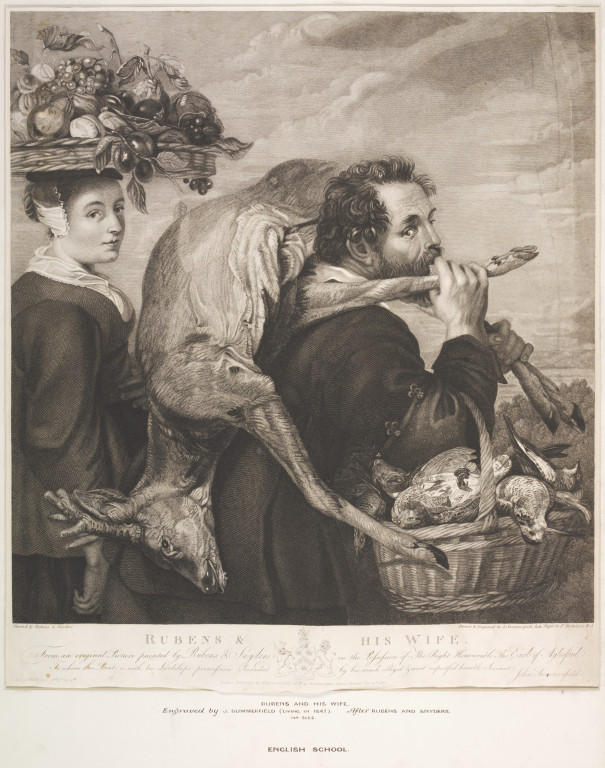
Museum visitors who turn their gaze towards the ceiling in Gallery 101 can see what is almost certainly intended to be a representation of Snyders.

Drawing from Still Life was commissioned in 1868 to decorate one of eighteen lunette-shaped recesses in the upper portion of rooms 100 and 101 (at that time the National Competition Gallery). The lunettes were removed just before the Second World War and placed in store. This painting, along with the eight others made for the west wall of room 101, was conserved and reinstalled in its original location in August 2010.
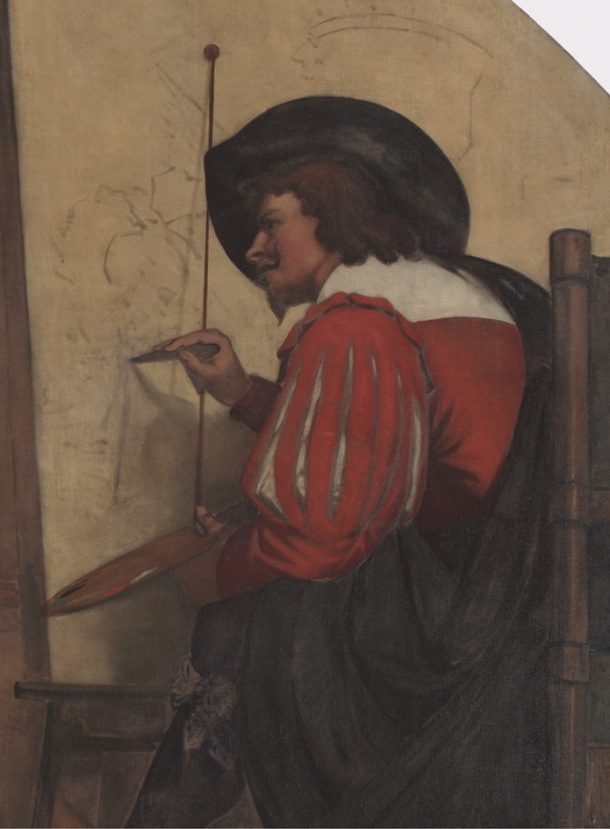
This lunette appears to represent Snyders making a preparatory drawing on canvas for a still life painting. A maid arranges fruits and flowers on a table on which are also displayed a dead swan, the neck and wing of which dramatically hang down the side of the table, recalling Snyders’ painting Still Life with Dead Game, Fruits and Vegetables in a Market (1614).
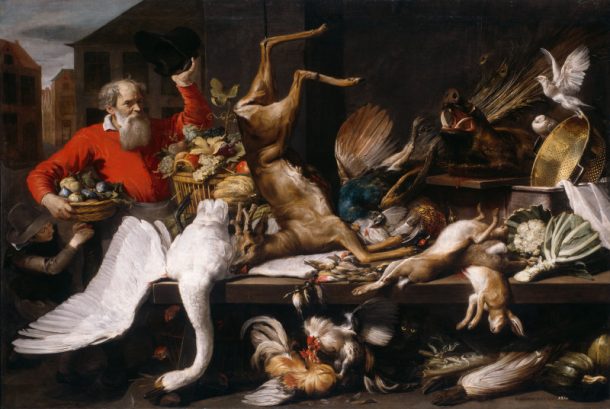
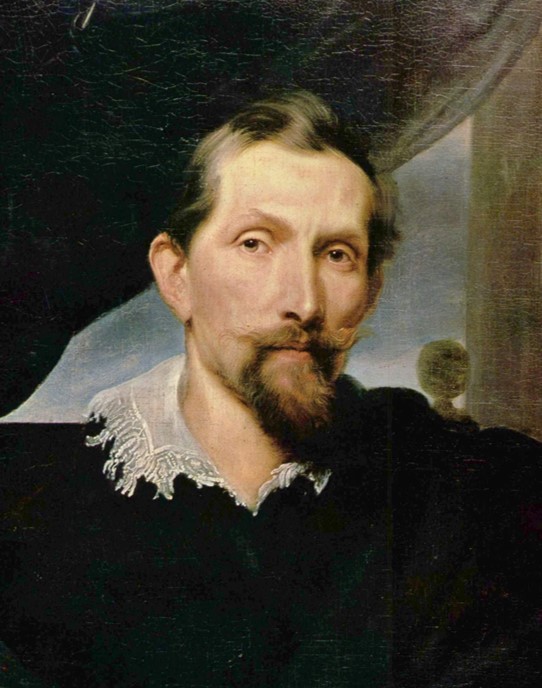

I am not familiar with the National Competition Gallery at the V&A. Your blog indicates that there were 18 lunette -shaped recessses in the upper portions of rooms 100 and 101[the Competition Rooms]. Where might I find more information about this room, and the process whereby the painters were selected for the embellishments.Does the museum possess documents regarding David Wilkie Wynfield and this particular picture? Some years ago I suggested that “Still Life with a Stag” was a genuine Snyders,;and so it was, as the cleaning showed. My monograph on Snyders is well-known: published first in 1995 and reprinted in 2006. I continue to write about this artist and carry out research on him. I intend to be in London this summer to do further research. I would be most grateful if records that the museum has might be made available to me. A current project concerns the taste for pictures by Snyders in the Georgian era, but extends into the 19th century as well.